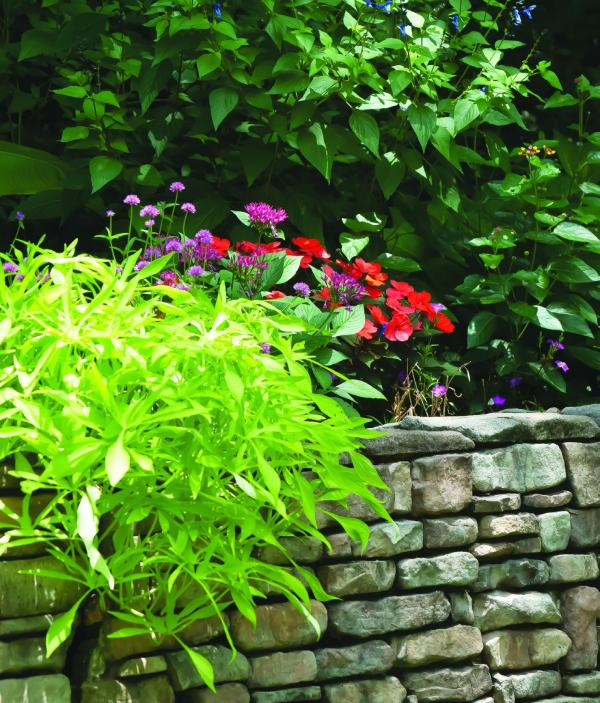GARDENING
My wife Jan recently commented, “Those ornamental sweet potatoes you planted this year look better than they did last year.” She was referring to a big display of Sweet Caroline Medusa Green that was draping over a rock wall.
Sheepishly, I bowed my head and sort of muttered that I didn’t plant any sweet potatoes this year. I feel like I am about to break out in hives knowing what I am about to write. Knowing I was going to do this, I even sought counsel from other southern horticulturists.
My beautiful Sweet Caroline Medusa Green spilling over the wall is in year two, as well as My Illusion Midnight Lace growing in a container. My Illusion Emerald Lace is in year three, and my dollar rescue off death row clearance at the big box store is in year four.
Confessing this is most relieving. I have felt like I should be a member of a sweet potato help group where we join and state emphatically, “Hi I’m Norman, and I grow ornamental sweet potatoes as perennial.”
The guilt associated with this is deep rooted. I suppose my most profound guilt came from the years working as a Horticulture Specialist for Mississippi State University. The first line in my job description was to promote the green industry. I have felt that if I spill the beans that the ornamental sweet potato may be perennial, the plant industry might not sell as many in the spring, and I might crash the market. My counsel in Louisiana, however, said, “Yes, we tell customers they are perennial.”
Obviously, I have been dabbling in horticulture humor or buffoonery to this point. The real truth is that the ornamental sweet potato is the same genus and species as the one you eat at the Thanksgiving table. They produce tubers just like the edible varieties — though their taste and consistency is not up to culinary standards.
So, picture that my Sweet Caroline Medusa Green or Illusion Emerald Lace are likewise producing tubers underground. When frost comes, I remove the foliage just like vegetable growers do: one, because they are ugly, and two, we don’t want any diseases going into the tuber.
My plants are growing in well-drained soil, which definitely is a factor in those that return. During the winter, the tubers and the dormant partner plants like Rockin salvias, Truffula Pink gomphrena and Vermillionaire cuphea are asleep waiting for spring temperatures and warm soil.
If you have grown ornamental sweet potatoes, you know they are vigorous travelers. With the ability to travel 10 to 20 feet, you can find yourself in the management business. This is the big reason why compact, or behaved, varieties like the Sweet Caroline Medusa Green have racked so many awards.
The Illusion varieties are also award winners and highly popular in the landscape industry. If you do have tubers, they are generally close in proximity to the original plant and haven’t creeped into the rose garden. The Illusion series is adding a new color in 2023 called Illusion Penny Lace that is a gorgeous coppery red.
Yes, The Garden Guy is an ornamental sweet potato lover and has been growing them as perennials for 3 or 4 years. I am looking forward to growing the new climbing Sweet Caroline Upside series and the new Illusion Penny Lace. Proven Winners has 18 varieties that represent the best in value for your garden dollar.
FollowmeonFacebook@ NormanWinterTheGardenGuy for more photos and garden inspiration.




